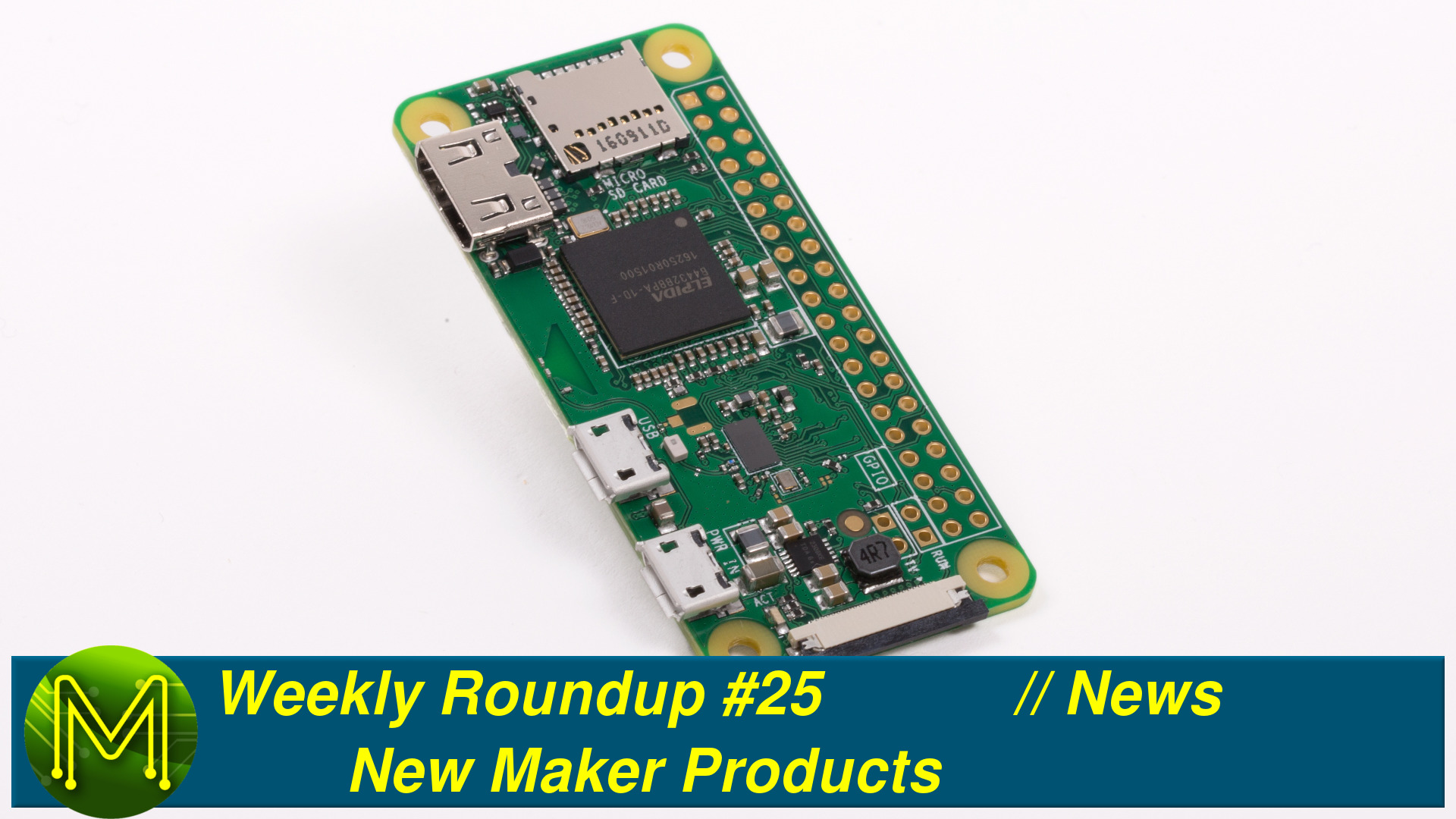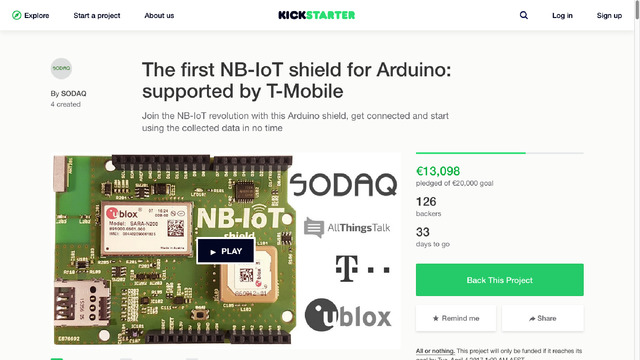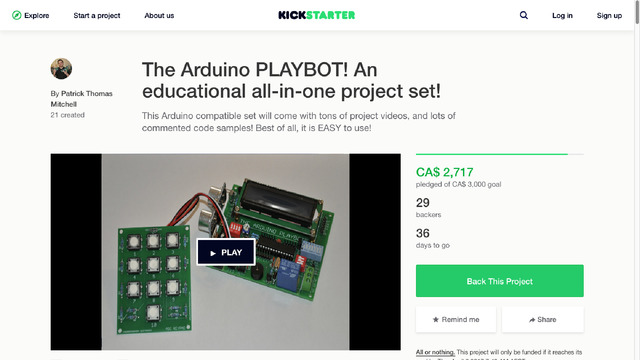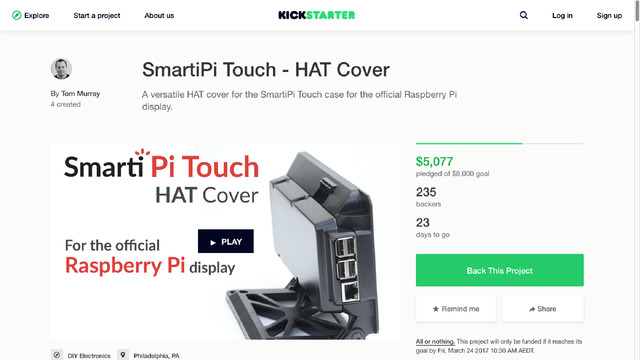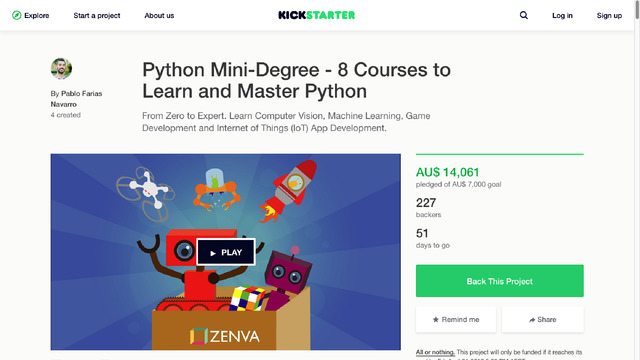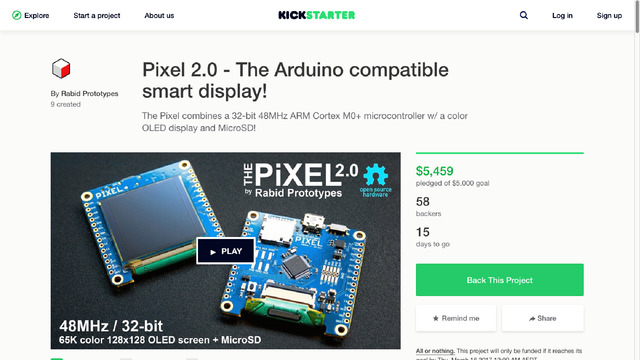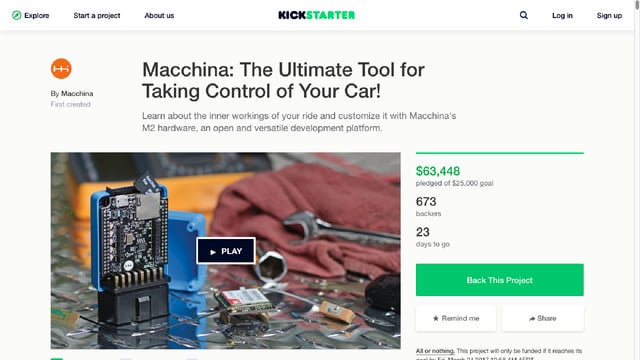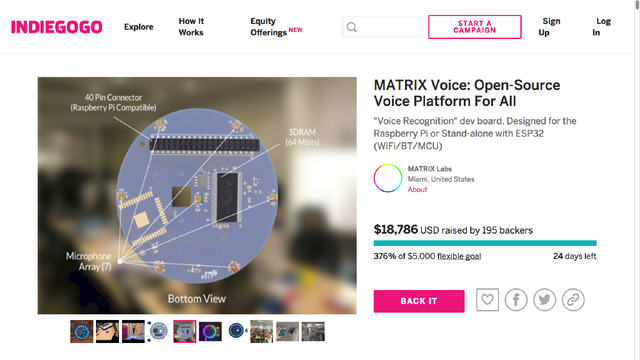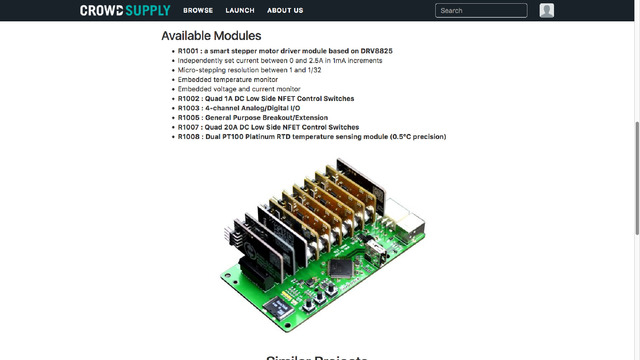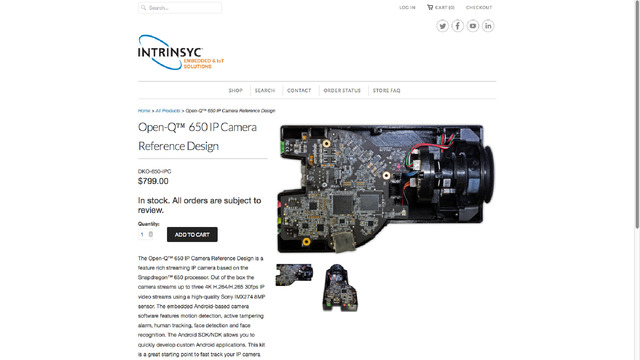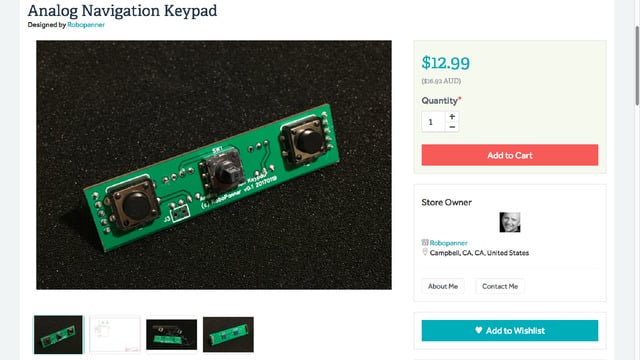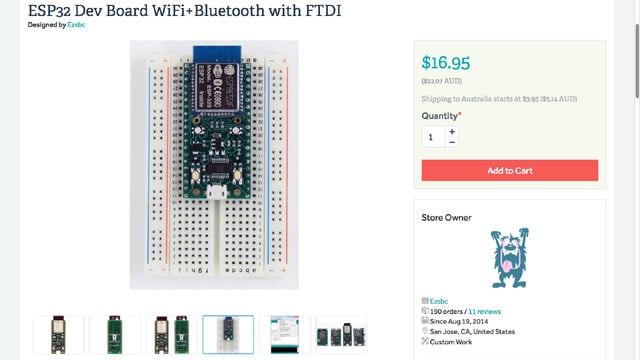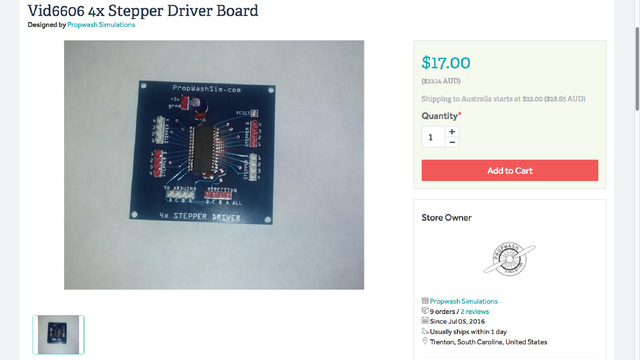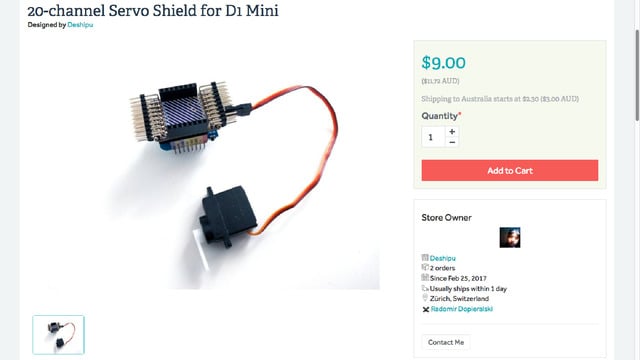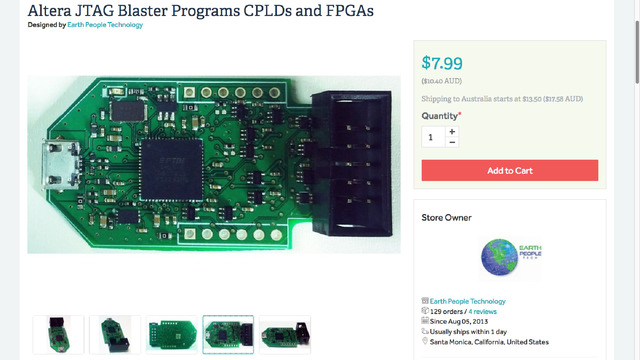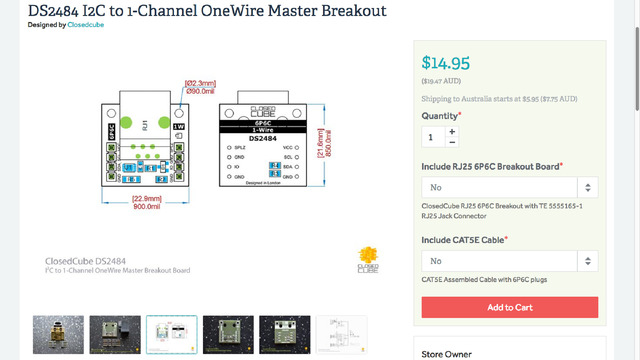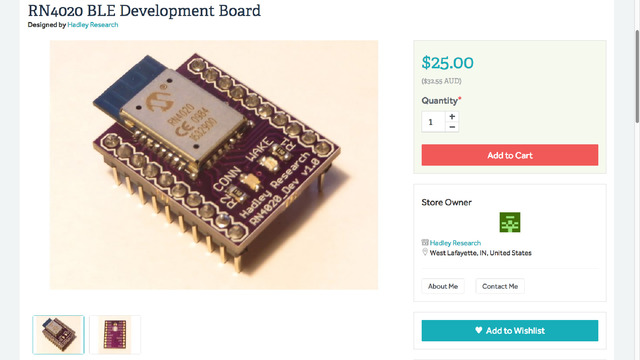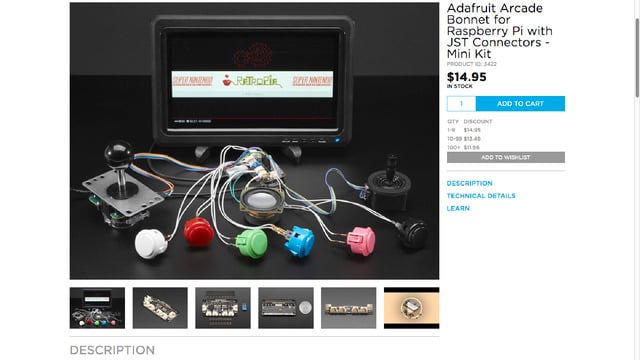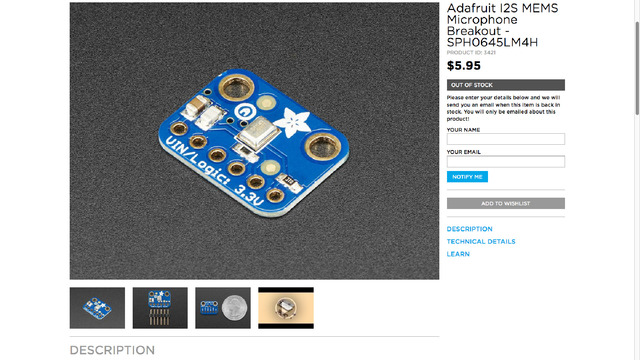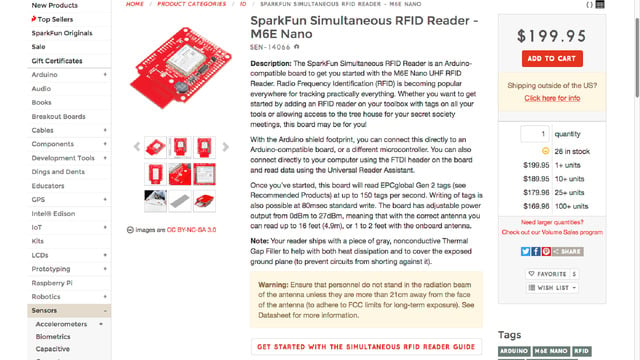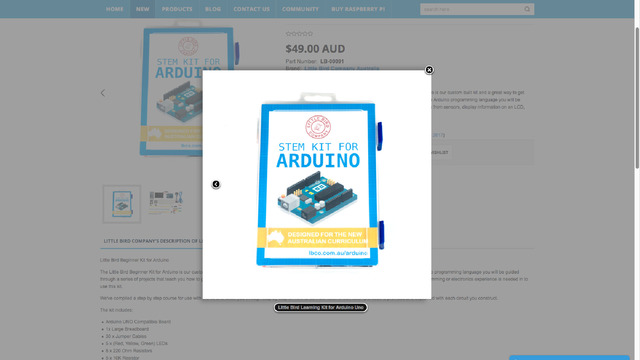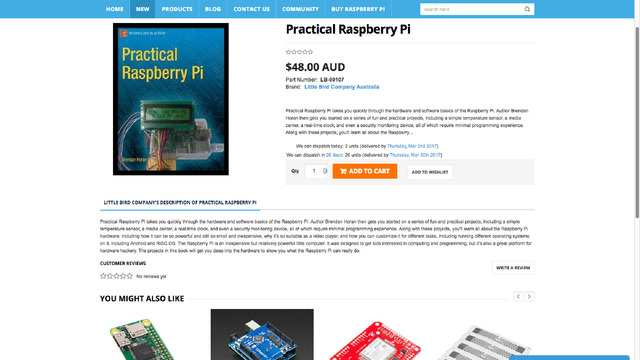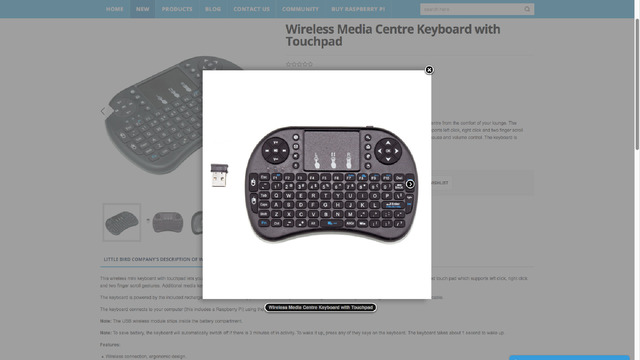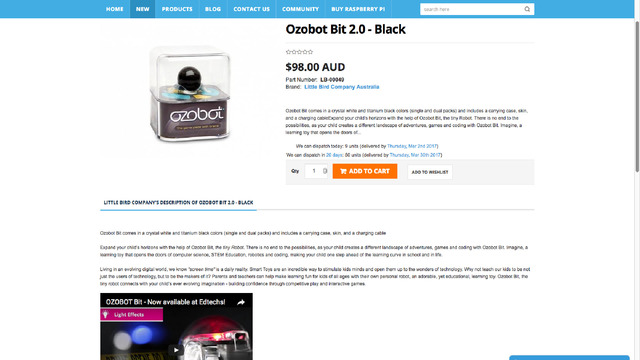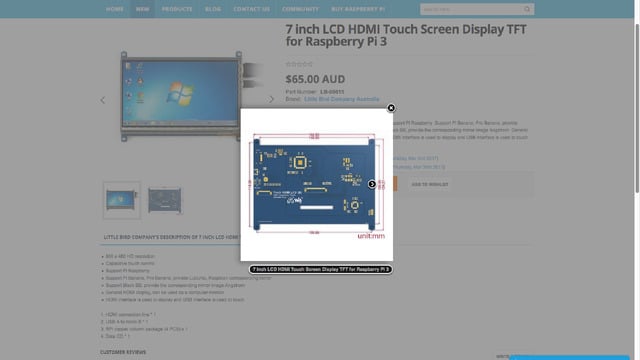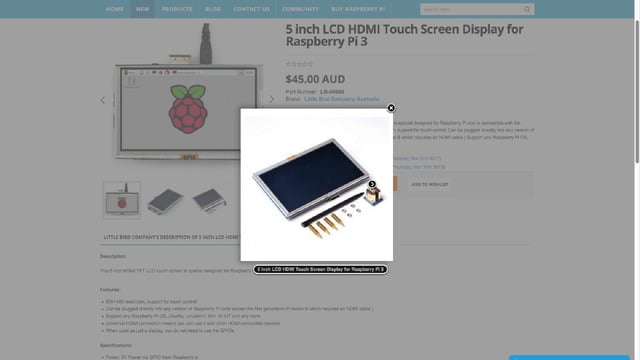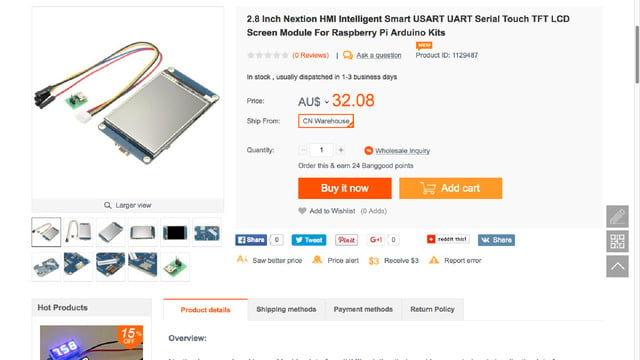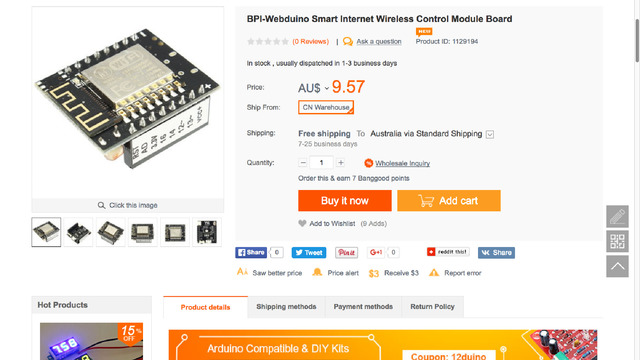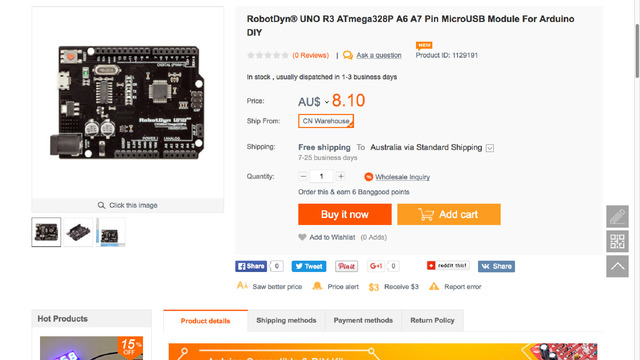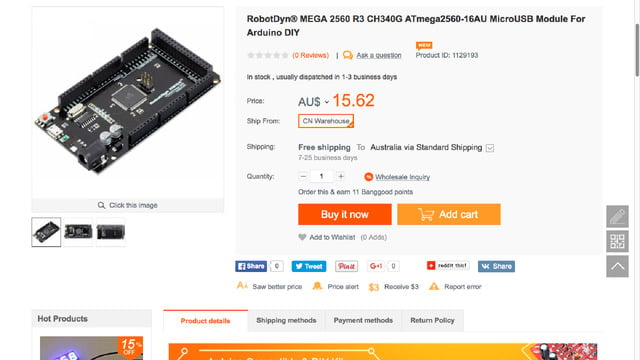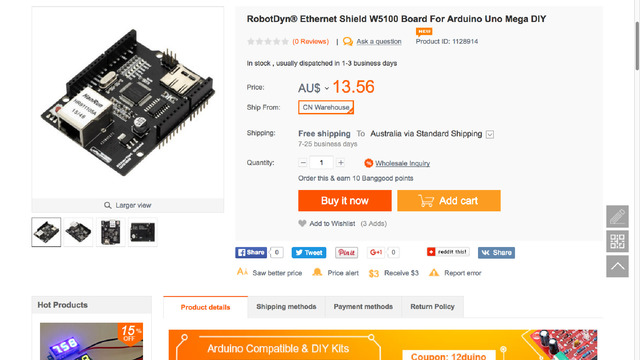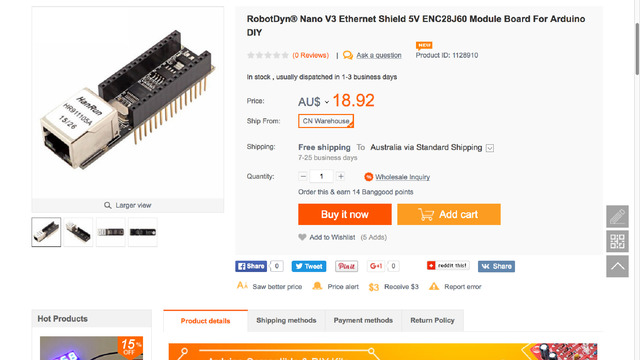Weekly Roundup #25 - New Maker Products // News
This week’s roundup was a little rushed, sorry. Someone got a little distracted updating a certain website and lost track of time… but there’s a robot!
Crowd Funding
KickStarter
This week on Kickstarter, there’s…
NB-IoT shield
… an NB-IoT Arduino shield which contains a Sara N2 module that can talk to an NB-IoT network. Nice. All you need is a SIM card and be in a country that’s supporting this new mobile network and your device will be able to roam the countryside with full internet coverage. No need for LoRa.Capacitive Touch Sensor Board
Then there’s a capacitive touch PCB with LED’s and a buzzer inbuilt. Using a Semtech touch controller. So you just have to interface using I2C.The Arduino PLAYBOT
and another all-in-one Arduino platform based on the ATmega328, containing sensors, ultrasonic range finders, LCD screen and other bits. The creator has also made some instructional videos for a dozen projects that you can create yourself. Looks pretty good for someone wanting to get into electronics.SmartiPi Touch - HAT Cover
Remember the SmartiPi Touch? Well, there’s a small Kickstarter to create a small cover for the back of these so that you can hide any expansion boards. If you have one of the originals, then you can bolt this on to the back.Python Mini-Degree
This next one is from down-under and is a short programming course for Python divided up into 8 parts. They’ve raised 3 Kickstarters before and this one is raising a lot of interest as well. So, looks like a good thing if you want to learn Python.Pixel 2.0
Pixel 2.0 is the next release of a previous Kickstarter. It contains the new Atmel SAMD21, SD slot and a 128 by 128 OLED display. It’s compatible with the Arduino IDE and even compatible with AdaFruit’s graphics library.Hmmm. I’m really tempted to hit that “pledge” button.
Macchina
If you want to hack around with your car, then the Macchina is for you. It’s gaining a lot of interest. It’s an OBD based device that claims it can talk to almost every vehicle manufacturer out there. It runs the SAM3x8e chip, which is Arduino IDE compatible, and has an SD slot, LEDs and a header for GPS, 3G, WiFi, Bluetooth, XBee, Ethernet and breakout boards allowing you to extend it further.Oh, man. Another one I’m tempted to hit the “pledge” button on!
PLEN Cube
Then there’s the PLEN Cube. It’s another robot. I guess at least this one has some sort of proven track record, but really robots are still gimmicks at this stage.Look, don’t get me wrong, they will be our overlords in years to come, but at this stage they’re still just a novelty. However, this one is probably the closest that we’re getting to some sort of reasonable functionality.
IndieGoGo
MATRIX Voice
There’s always a bunch of useless stuff on IndieGoGo, but I found the Matrix Voice, which is an open source board taking on voice services like the Amazon Echo. Contains an ESP32, a ring of RGB LEDs, an array of 7 MEMS mics and a Xilinx Spartan6 FPGA. It also has a Pi compatible 40 pin GPIO header. You can connect it to Amazon’s Alexa using a Pi, or run PocketSphinx on the board.Crowd Supply
JuicyBoard
Over at Crowd Supply there’s the JuicyBoard, which has nothing to do with fruit based SBCs.It’s a modular platform based on the LPC1769 which is an ARM Cortex-M3 SoC. It runs off between 9 and 24 volts supplying 5 and 3.3 volts to modules that can be plugged in to edge connector style headers. There’s a range of modules from stepper drivers, to NFET switches, GPIOs, breakouts and sensors. Looks like a fairly decent platform for robotics.
Honorable mentions
Open-Q 650
The Open-Q 650 is a reference design camera board that can stream up to three 4K H264 video streams. Runs the Qualcomm Snapdragon 650 which contains a dual core Cortex-A72, quad core Cortex-A53, Adreno 510 GPU and Hexagon V56 DSP with 2G DDR3. If all that went over your head, then basically it’s capable of real-time tracking, motion detection and facial recognition. It’s one pretty cool product, but unfortunately has a price tag that you’d normally find on a house. However, it won’t be long before it gets cheaper.Maker Shops
Tindie
Man, there’s lots on Tindie this week!
Analog Navigation Keypad
This simple little board has one of those old laptop mouse joysticks, good for situations where you need a mouse but don’t have the space.ESP32 Dev Board
Here’s another ESP32 board, with inbuilt FTDI and all the GPIOs broken out.Vid6606 4x Stepper Driver Board
And a small stepper motor driver board based on the VID6606 chip designed to drive up to 4 of the X27 steppers using 5v logic. These types of steppers are designed to drive needle gauges as you’d find in vehicles. I’m tempted to get one of these as I have a project coming up where I’ll need one.20-channel Servo Shield for D1 Mini
Or if you’re looking at controlling a bucket load of servo motors, then this one will control up to 20 of the things. Access is via I2C and it’s designed to be stacked onto a WeMos, so you can potentially control 80 servos at once from one I2C bus.ArduSHIELD
ArduSHIELD is a simple concept, but pretty useful to have around. It accepts all the popular Arduino boards and breaks out the pins for a breadboard. So, you can use it as either shield or base board. I wanted to make one of these for my tests in board reviews, but I think I’ll just buy this one.Altera JTAG Blaster Programs CPLDs and FPGAs
If you’re in to CPLDs or FPGAs, then this handy JTAG board will allow you to program up most of the Altera chips. Note; that it’s not compatible with Linux.Octosonar
The Octosonar is a small board designed to control up to 8 HC-SR04 ultrasonic range sensors over I2C. It handles all the complex timing and interrupts for you, so just plonk it into your Uber robot and go.DS2484 I2C to 1-Channel OneWire Master Breakout
This handy little board is a bridge between I2C and OneWire devices. Can handle a 400kHz I2C bus speed, and works on all the common logic levels. You also have access to adjust the OneWire timings to accommodate different devices.RN4020 BLE Development Board
Ever heard of the RN4020? It’s a Bluetooth based module similar to a lot of others out there, but this is one of the very few breakout boards I’ve seen.AdaFruit, Seeed, SparkFun, DFRobot, DigiKey
Adafruit Arcade Bonnet for Raspberry Pi
If you’re into retro Arcade emulation, then AdaFruit have a pretty cool Arcade bonnet for the Pi with everything you need to relive those arcade glory days.Adafruit I2S MEMS Microphone Breakout
Then there’s also the currently out of stock I2S MEMS microphone breakout, capable of sampling between 50Hz to 15KHz and running off 3.3v logic levels.SparkFun Simultaneous RFID Reader - M6E Nano
Over at SparkFun, they have a pretty expensive RFID reader, but if you want fast reads, then this is the one to get.Pocket Geiger Counter - Type 5
Ever wanted to know just how much Gamma and Beta radiation was hanging around? Can be powered from 3 to 9 volts and comes with Arduino examples to get you going.Little Bird Learning Kit for Arduino Uno
I’ve added a new store called Little Bird Electronics this week. They have designed their own Learning Kit for the Arduino Uno. It’s pretty good value too, considering the amount of stuff you get in it and it’s one of the few that’s designed specifically for the Ozzie STEM school curriculum. Nice one.Practical Raspberry Pi
There’s also a book for kids looking at getting into Raspberry Pis with a bunch of project ideas and examples from easy to complicated. It even has a section on how to install Android O/S.Wireless Media Centre Keyboard with Touchpad
There’s also a cheap media center keyboard with touchpad. These are really handy if you’ve setup an SBC as an Uber media center. Small, lightweight and works off 2.4GHz RF.Ozobot Bit 2.0
Ozobot is a great little STEM kit. This one is the Ozobot Bit, which contains an Arduino based board and a bunch of sensors that is a great start for kids wanting to get into robotics.7 inch LCD HDMI TFT Touch Screen
Then Little Bird have an 800 x 480 resolution HDMI TFT touch screen, which is designed for a Pi, but can be used on anything that has a Pi GPIO header. Or you could use it as a plain HDMI display when powered from USB. This one is the 7 inch display,5 inch LCD HDMI TFT Touch Screen
and this one is the 5 inch version.The Cheap Side
There’s not that many new things on the Eastern front, but BangGood have…

